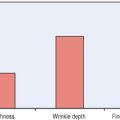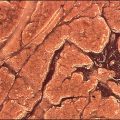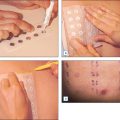Chapter 26 Dry Skin
Dry skin is an area where cosmeceuticals play an important role both in enhancing the efficacy of prescription medications and in preventing disease relapse. In a world where the medical and social benefits of cleansing are well recognized, dry skin can result both from endogenous and exogenous causes. No matter what the cause, the appearance, functioning, and feel of dry skin can be effectively improved through the use of cosmeceuticals. Table 26.1 organizes the cosmeceutical actives such that the dermatologist can select which ingredients might be most beneficial in a moisturizer for a given patient. The table has been broken into the subgroups of occlusives, humectants, stratum corneum modifiers, and emollients.
Table 26.1 Cosmeceutical actives for dry skin
| Cosmeceutical | Effects on skin physiology | Patient selection comments |
| A: Occlusive moisturizing | ||
| Petrolatum | Rapidly reduces transepidermal water loss (TEWL) by 99% | Most effective for extremely dry skin, greasy, decreases scaling appearance |
| Mineral oil | Reduces TEWL by approximately 40% | Less greasy than petrolatum, does not cause acne |
| Lanolin | Mimics human sebum | Common cause of allergic contact dermatitis, not used in hypoallergenic formulations |
| Lanolin alcohol | Similar to lanolin, but branched molecule provides smooth skin feel | Excellent at smoothing skin surface, common cause of allergic contact dermatitis |
| Liquid paraffin | Provides protective film, reduces TEWL | Excellent hand and foot moisturizer for hand dermatitis and dyshidrosis |
| Carnauba wax | Provides protective film somewhat thinner than liquid paraffin | Same as liquid paraffin, naturally derived ingredient |
| Dimethicone | Reduces TEWL without greasy feel | Excellent for acne and sensitive skin patients, hypoallergenic, noncomedogenic, nonacnegenic |
| Cyclomethicone | Thicker silicone than dimethicone | Same as dimethicone |
| B: Humectant | ||
| Propylene glycol | Attracts water from viable epidermis and dermis to stratum corneum | Not good on abraded or sensitive skin as can cause stinging |
| Glycerin | Most effective humectant available to increase stratum corneum hydration | If used in too high concentration will create sticky feeling on skin, especially under high humidity conditions |
| Hyaluronic acid | Used as a secondary humectant | May be used to supplement glycerin to decrease stickiness |
| Panthenol | Vitamin B5 is the most effective vitamin humectant | May be used to supplement other humectants |
| Sodium PCA | Considered part of natural moisturizing factor for skin | May be used to supplement glycerin to decrease stickiness |
| C: Stratum corneum modifying | ||
| Ceramides | Naturally present as part of intercellular lipids | Improves skin barrier in atopic dermatitis |
| Cholesterol | Naturally present as part of intracellular lipids | Should be balanced with free fatty acids and ceramides |
| Urea | Increases water binding sites on dehydrated keratinocytes | Hydrates calluses and keratin debris |
| Lactic acid | Decreases corneocyte adhesion | Enhances desquamation of corneocytes in ichthyosis |
| D: Emollient | ||
| Cetyl stearate | Smoothes desquamating corneocytes | Most common emollient, nongreasy skin smoothing effect |
| Dicaprylyl maleate | Used to dissolve UV sunscreens in moisturizing formulations | Provides excellent smooth skin feel |
| C12–15 alkyl benzoate | Fills in spaces between desquamating corneocytes | Less waxy feel on skin than paraffin |





